Superstition and strange cultural events and practices are as old as humanity itself. We all have our fair share of things we believe in that appear odd to somebody that grew up in another culture.
Some people are afraid of the number 13 while others don’t seem to care at all?
Most of the customs we are used to are defined by the culture we grow up in. If enough people believe in something or if you are supposed to do something that everybody else is doing because it’s been passed on from one generation to the next, it’s very likely You’ll have the same beliefs and practices.
We thought it was interesting to check out some of these cultural habits and why people do them in the first place.
Some of these traditions are understandable, some are odd and some are just straight-up weird.
So here is a list of 26 strange traditions around the world that are practiced today.
1. Baby Jumping in Spain
What would be a great way to celebrate a Catholic holiday?
Let’s jump over some babies!
That’s actually what some people in the village of Castrillo de Murcia are doing to celebrate the Catholic feast of Corpus Christi.
The tradition dates back to 1620 and is called “El Salto del Colacho” which translates to “The Devil’s Jump.”
It is believed that this cleanses the babies of original sin, will help them in their lives, and protect them against illness.

2. Burning Of Witches In Czech Republic
Don’t worry, we’re not back to the Middle-Ages with the crusade against women who were a bit odd and labeled as a witch to get sentenced to burn at the stake.
We’re talking about a tradition in the Czech Republic that takes place on the night of April 30, also referred to as Walpurgis Night, in which people make a bonfire and burn a dummy witch.
The meaning behind this tradition is that people believed that by burning a witch, they could keep the cold weather away and finally get rid of the long winter.
Right now this is mostly a fun event for kids and is still practiced today every year on the night of April 30.
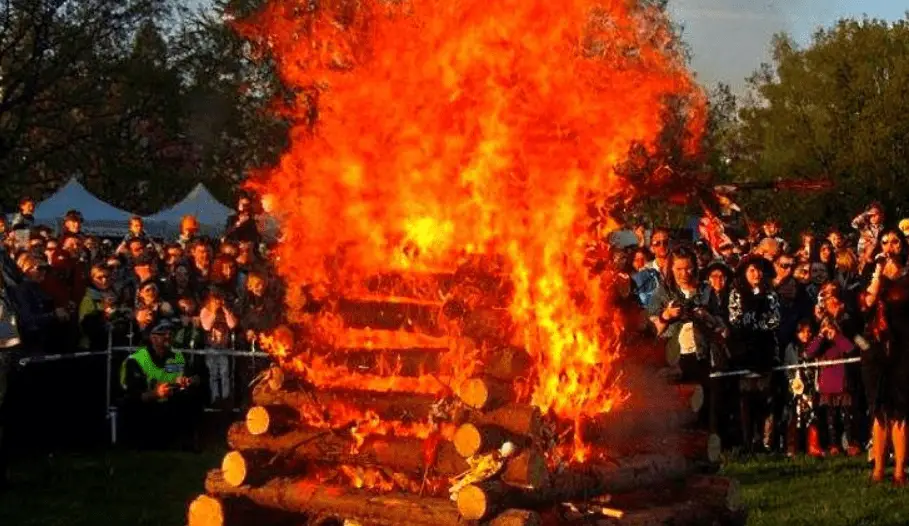
3. Greeting Magpies In The UK
Magpies are little birds that are considered to be one of the most intelligent animals on the planet.
Do we need to fear them?
Obviously not, but the superstition ingrained in people living in the UK think this particular type of bird brings bad luck, probably stemming from the belief that the magpie was the only bird not to sing for Jesus on the cross.
How to solve it?
You simply great the little magpie with the words: “Good morning, Mr. Magpie, how are Mrs. Magpie and all the other little magpies?’

4. Tossing Of Baby Teeth In Greece
In America, children believe that when a new tooth has come out, a fairy will leave them money when they sleep.
In Greece, little children throw their teeth on the roof of their home to bring them luck.
As they are doing this, they are allowed to make a wish that their permanent teeth will come out strong and healthy.
We must admit, children’s traditions are amongst our favorites, especially if it’s as innocent as this one.
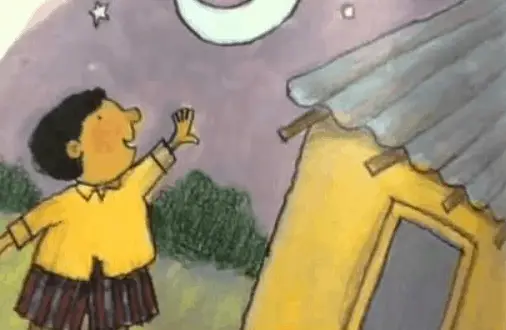
5. Nag Panchami Festival In India
We all know that in Christianity, snakes are deemed to be evil. In India however and in other countries where Hindus reside, Serpents are deemed to be divine.
For this reason, Hindus from all over the world celebrate snakes in a festival called Nag Panchami.
The festival is held on the fifth day of the bright half of the lunar month of Shravana which is in either July or August according to the Hindu calendar.
Please note, both pictures of snakes and live animals are worshipped at the Nag Panchami festival.
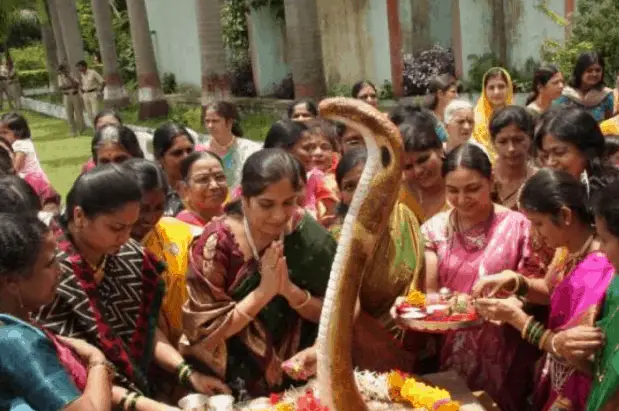
6. Krampuslauf in Austria, Bavaria, and Switzerland
In the Netherlands and Belgium, good children are rewarded by a holy man called Saint-Nicolas. In Austria, Switzerland and a part of Germany called Bavaria, a demon which is deemed to be half-goat, half-devil is out to punish children who have misbehaved during the Christmas period.
The Krampuslauf is a procession of young men dressed as the Krampus and enter in competitions such as being the “best dressed” or “most scary” Krampus of them all.
If this character doesn’t make children behave next year, I don’t know what will. 🙂
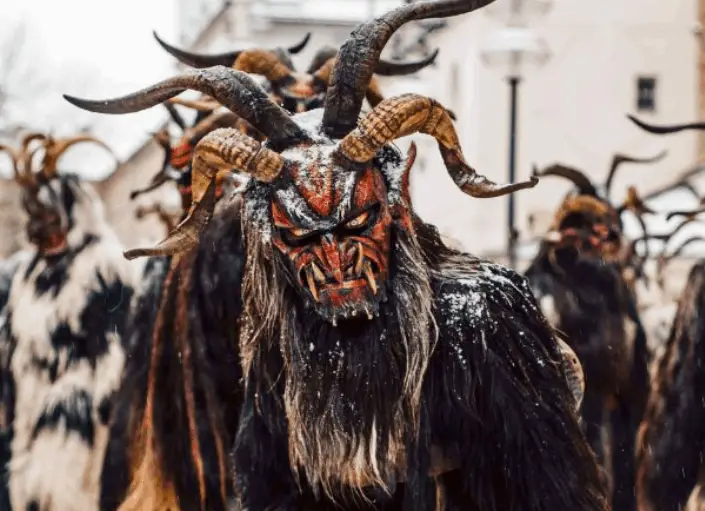
7. Sardine Burial In Spain
The burial of the sardine, in Spanish called “Entierro de la Sardina”, is a Spanish ceremony celebrated on Ash Wednesday.
It refers to a symbolic burial of the past to create a better future.
It also marks the end of the carnival and other festivities and is a tradition that is celebrated mostly in Tenerife, an island belonging to Spain.
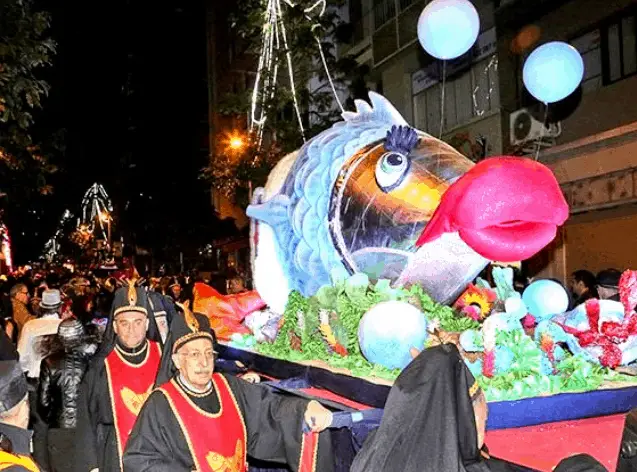
8. Henna Party In Muslim Countries
There are plenty of pre-marital traditions all around the world. In the Middle East and Southern Asia, Henna Parties are part of the bride’s pre-marital preparation.
The event takes place a couple of days before the actual wedding and is attended by women friends and family.
Artists put Henna decorations on the hands and feet of the future bride, which are believed to both protect the bride and make her more attractive.
The Henna paste used results in deep red stains that last for several weeks.

9. Bayanihan In The Philippines
Nobody likes moving, and everybody can use a helping hand to move all of your stuff from one place to another.
In the Philippines, a tradition called Bayanihan, not only moves stuff from one place to another, but the entire village helps to move the entire house.
Native houses in the Philippines are called “Bahay Kubo” and are made from light materials such as bamboo and coconut leaves. This makes the houses rather light, and it’s possible to put bamboo poles at the bottom and simply lift the house to move it to another location.
The tradition shows the spirit of the Filipino people and their willingness to help out others in the community in need.
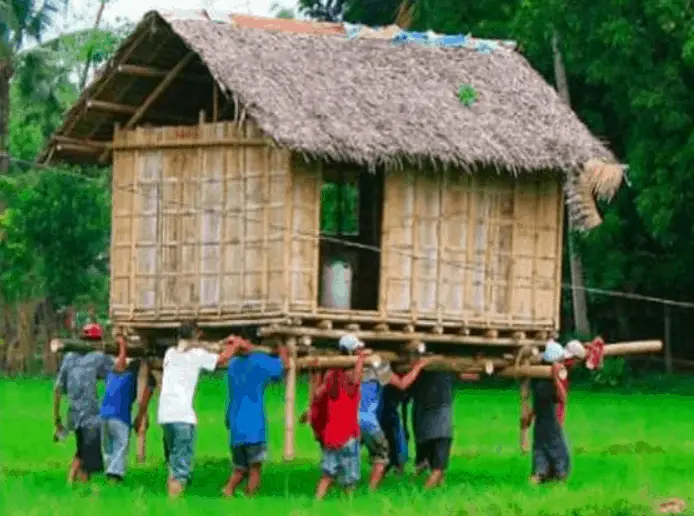
10. Welcome Drinks In Fiji
Have you ever been to a hotel and been presented with a welcome drink? If you ever visit Fiji, you are bound to get a Kava drink, the drink that people in Fiji consider to be their national drink.
Kava is not to be mistaken for the bubbly goodness that comes from Spain called Cava. Kava in Fiji is a plant extract drink that is said to give a mild euphoric effect.
People in Fiji drink it a lot, and so will you if you ever visit the place.
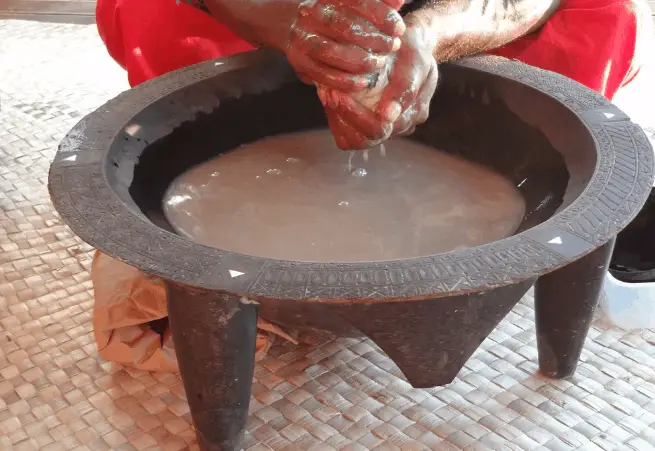
11. Mudras
Mudras literally translate to gestures and are common practice in Buddhism and Hinduïsm.
They actually date back to antiquity and were usually prescribed to cure disease and improve health.
Right now, Buddhists and Hindus around the world believe there is energy in the hands which can be used to heal other people or yourself.
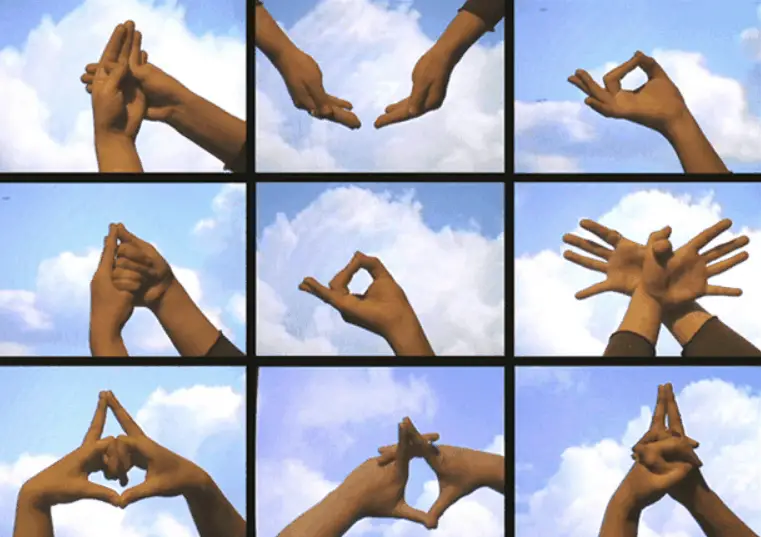
12. Avoiding Writing With Red Ink In South Korea
If you get your school report or an exam, most of the time the wrong answers are marked in red right?
Not in South Korea!
Red ink is used for marking dead people in registers and is therefore never used by anyone in the country.
Whenever you visit South Korea, make sure not to bring your red pen. 🙂

13. The Haka in New Zealand
The Haka is a traditional dance ritual performed by the Maori people who are the indigenous people of New Zealand.
If you have ever watched a rugby game played by the New Zealand national team, you have surely seen the Haka already.
Even though it’s related to a routine of men before going to war, it is also being performed by women.
The Haka is performed to welcome important guests or to celebrate important events.
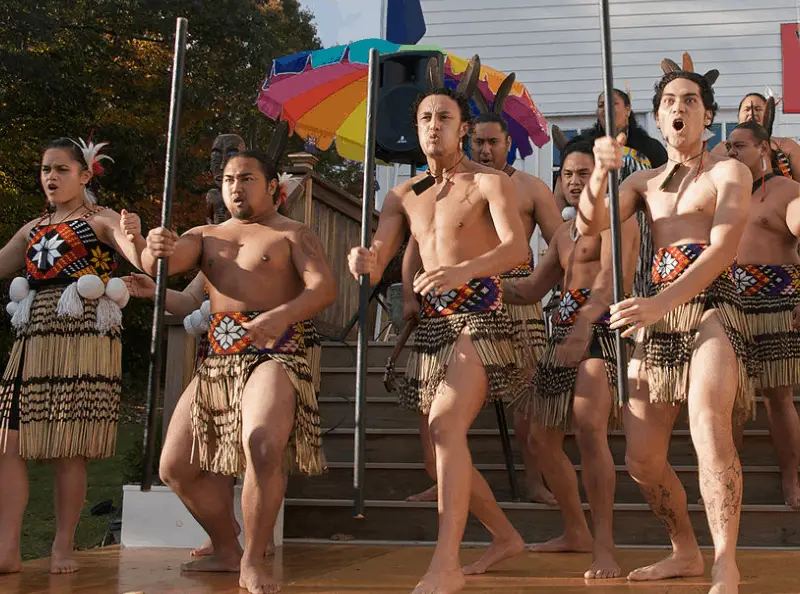
14. Burial Ritual in Brazil and Venezuela
The Yanomami tribe which lives in South America has a special kind of ritual when it comes to burials.
Instead of just putting the deceased person in the ground, they not just burn them, but wrap them in leaves and put them deep in the tropical jungle for a couple of weeks.
What happens then is that insects start eating away at the flesh until bones remain.
But dig this, when that happened, they collect the remains, which are no mere bones, cremate those bones, grind them and use them in a drink. In other words, they literally drink the dead person.
This practice is meant to empower the Yanomami tribe and keep the remembrance of the dead person alive.
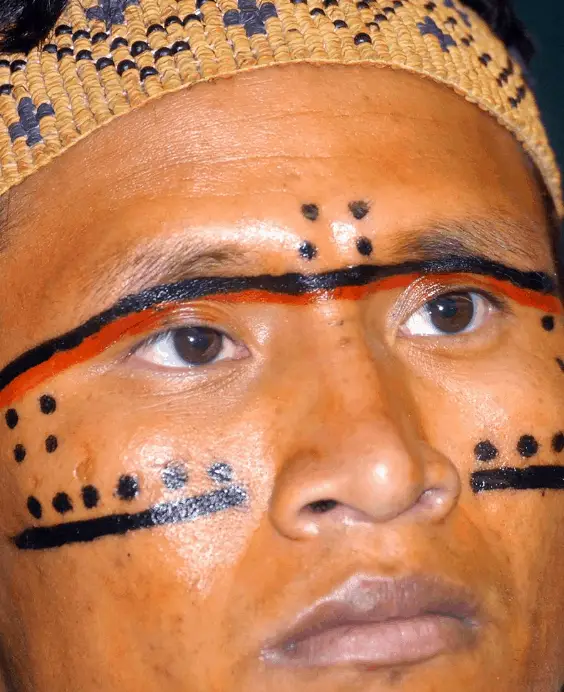
15. Camel Wrestling in Turkey
There are numerous sports all around the world with animals. One of the more weird sports being played today is camel wrestling.
Even though this sport is played mainly in Turkey, it’s also played in the Middle East and parts of Asia.
Two male camels are led out in front of a female camel, and the winner will get its prize. No interference by humans is allowed.
Something positive: The camels usually don’t get hurt and it’s not a life or death event as with cockfighting.
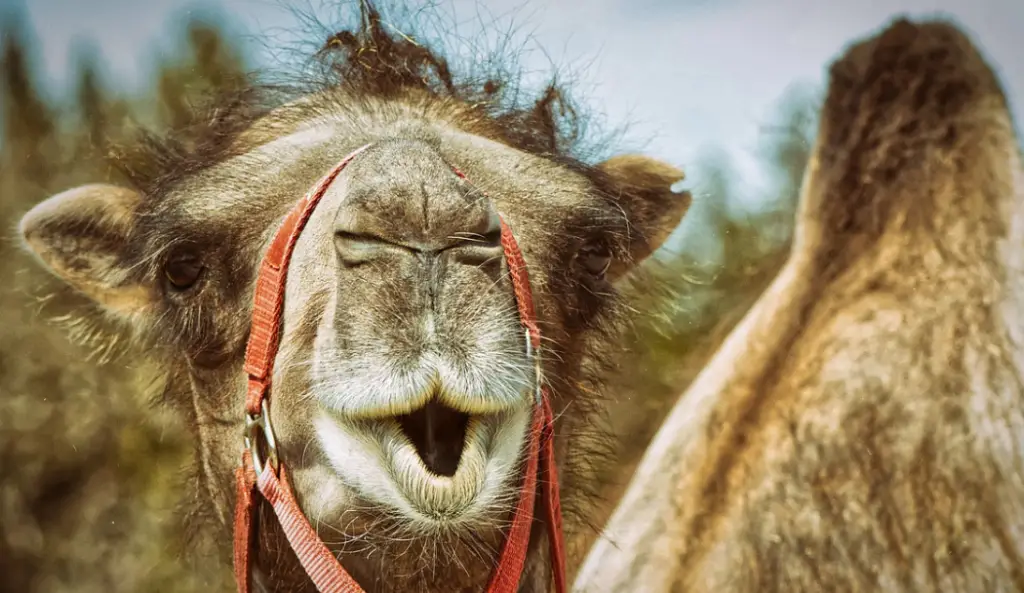
16. Antzar Eguna in Spain
Antzar Eguna literally translates to the “Day Of The Goose” and is celebrated today in the small Spanish finish town of Lekeitio which is located in the Basque region.
If you think this is a good day for the goose, think again.
A goose covered in oil is hung above the town harbor, and the game consists of trying to decapitate the goose.
The first to cut off the goose’s head wins, and here is where this weird spectacle happens:

17. Keeping a Rabbit’s Foot
In many cultures around the world, a rabbit’s foot means good luck, hence people keep an amulet with a rabbit foot in it with them.
The places this custom isn’t weird at all include Europe, China, Africa, and North and South America.
It’s also frequently used by gamblers as they believe their chances of beating the house increase when carrying the foot of the rabbit with them.
We tend to believe that in the long run, the house always wins.
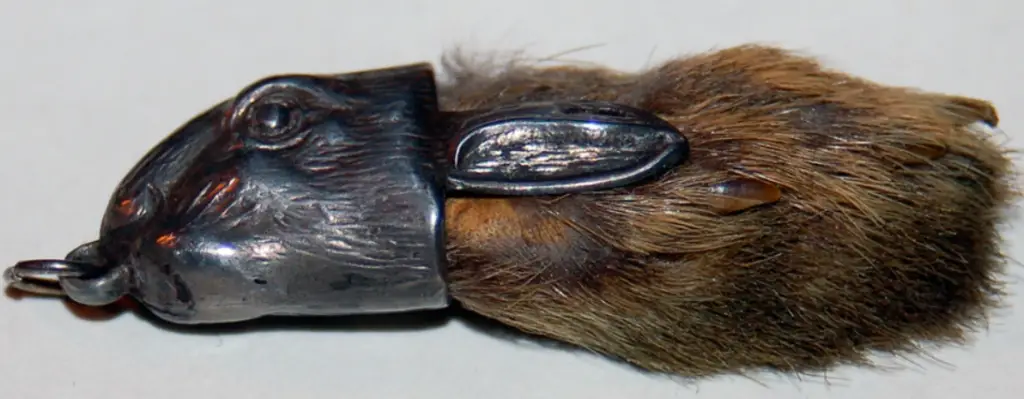
18. Looking For Fern Blossoms in Estonia
Mainly in Estonia, but also Latvia, Lithuania, Finland, and Sweden, looking for Fern Flowers are done by couples who want to increase their good luck.
The tradition of finding fern flowers on the night of 23 to 24 June is believed to either bring wealth or another good fortune.
The couples go deep into the woods to find the flowers and hopefully for them, they find a couple to bless their relationship.
What else would you do deep in the woods on a nice summer day, right? 🙂

19. The Polterabend Custom in Germany
You ever heard the old saying “Shards bring luck?”
Well, in Germany they take this quite literally when it comes to pre-marriage traditions, as they have a specific tradition for this as they firmly believe in “Scherben bringen Glück.”
The night before the couple gets married, friends and family gather and literally throw porcelain on the floor to bring luck to the married couple.
The word Polterabend is derived from the German word “poltern” which simply means making a lot of noise, and that’s exactly what happens during this tradition.

20. Mordida Mexico
In America, children are made to blow candles put on their birthday cake, and make a wish.
In Mexico, they have a completely different type of tradition called the “Mordida.”
What happens is that the child’s hands are tied behind their back, and their face is shoved into their face when they try to take the first bite, followed by everybody singing in loud voice “Mordida! Mordida! Mordida!”
While it’s obviously a lot of fun for the onlookers, I still prefer making a wish to the tunes of a nice happy birthday song.
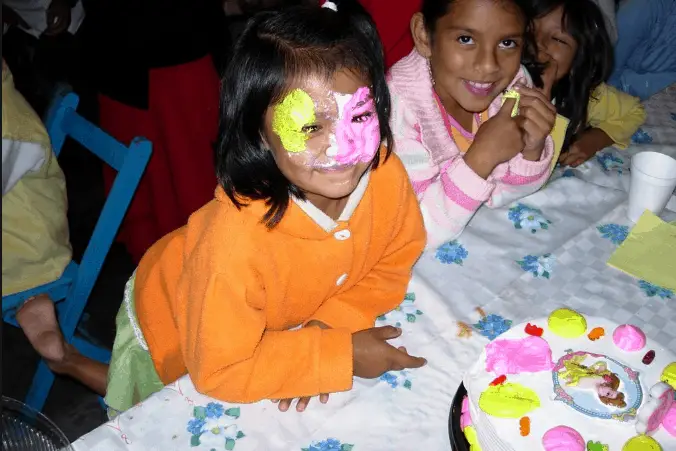
21. Crying Marriage in China
For most people, their wedding day is one of the most beautiful days of their lives (at least at that moment). In China’s Sichuan Province, not so much…
Imagine that your soon-to-be wife is crying the entire day of your wedding. That’s exactly what happens in some parts of China.
The people believing in this ritual are convinced that a crying bride during the wedding, and most of the time the crying starts even a month before the wedding, means a happy marriage.
All we can say is that we feel they’re not off to a good start.

22. Seppuku in Japan
Seppuku also referred to as “Harakiri” is an old tradition in Japan which simply means taking your own life by disembowelment.
In ancient times, this method of suicide was reserved for Samurai warriors but has been practiced by a lot of other Japanese people as well.
Japanese people don’t take losing face lightly, and people performing this horrible tradition believe it’s the only way to restore their honor them or their family.
In today’s day and age, this method of suicide is very uncommon and the last reported case happened back in 2001.
An absolutely horrible way to go…

23. The Monkey Buffet Festival in Thailand
It’s good to be a monkey in Thailand!
Every year in Lopburi, one of Thailand’s regions Lopburi just North of its capital Bangkok, an annual tradition is held in which monkeys are provided with a feast meal.
Piles of fruits and other goodies are put on a massive plate for monkeys to devour.
It’s considered one of the weirdest traditions in the world and is supposed to bring good luck to the people of the region.
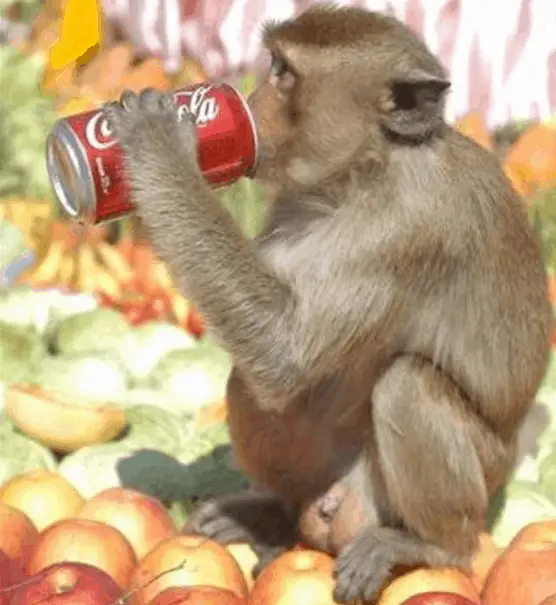
24. La Tomatina In Spain
If you ever want to get into a tomato fight, let’s visit the Valencian town of Buñol about 30 kilometers east of Valencia on the last Wednesday of August.
For about one hour, participants throw tomatoes at each other just for the sake of it.
Obviously, when the fight is over, the town square is colored completely red, and so are the people that joined the fight.

25. Throwing Cinnamon at Singles in Denmark
These days, people are getting married later and later, or don’t get married at all. In Denmark, you are quite literally pushed to tie the knot before the age of 25 in a weird tradition.
If you’re 25 years of age or older, prepare to get a cinnamon shower!
The tradition dates back hundreds of years because spice salesmen weren’t home long enough to settle down. Upon arrival from their many travels to sell their merchandise, they would get a dose of their own products thrown at them.
To make it even worse, if you remain single above the age of 30, the cinnamon is replaced with pepper.
Reason enough to find your soulmate and get married? You be the judge.
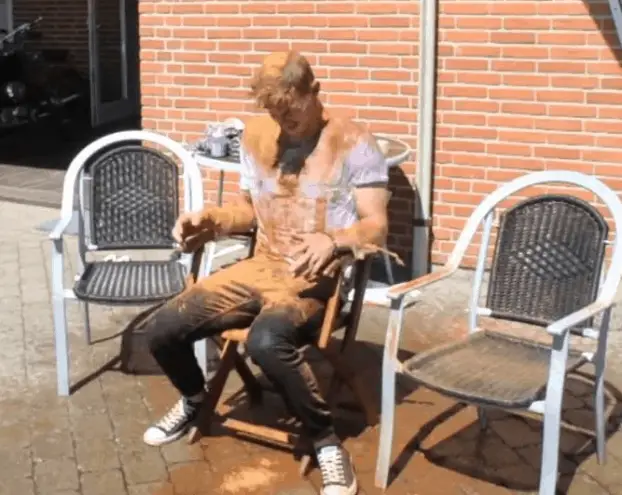
26. Adulthood Initiation In Brazil
To finalize this list of strange traditions around the world today, let’s take a look at what young men of the Sateré-Mawé tribe, who live deep in the Amazon in Brazil, have to go through.
If You’re not familiar with bullet ants, they got their name because their sting actually feels similar to a bullet wound. In other words, it hurts immensely.
Young men of this tribe have to gather bullet ants in the woods and put on gloves filled with these ants for over 5 minutes. When the ordeal is over, the boy’s hands and arms are literally paralyzed because of the venom from the stings.
Is the ordeal over after a couple of days of immense pain?
No, they have to repeat the 5 minutes at least 20 times to finally call themselves a man!
Below You can see British naturalist Steve Backshall participating in the bullet ant initiation ritual, and from the look on his face, you can somewhat see what it feels like.

While most of these weird traditions are fun and even funny, some are downright horrible. Let’s just hope the traditions in your own country aren’t cruel like some of these in the list.
